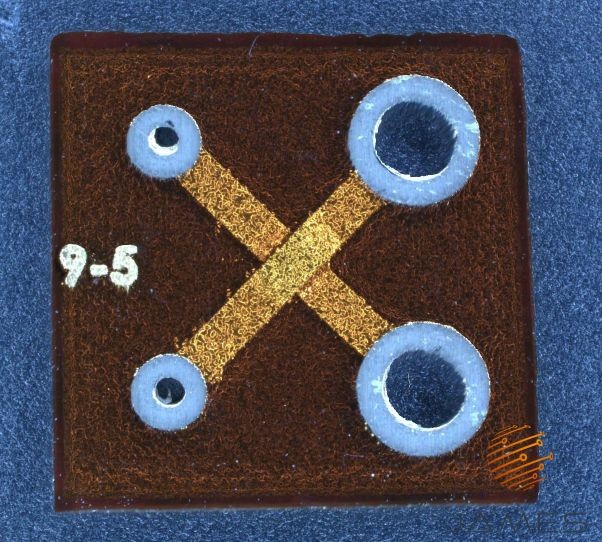3D AME Hybrid Structure Inlay
Verified
A first design is finished, a complete explanation of the targeted functionality is included, and the targeted printer technology has been provided. This AME design also provides a model which is proven to fulfill the targeted functionality. Furthermore, the AME structure has been printed and validated by measurements. A complete set of the measurement setup and results is provided.

The 3D AME hybrid structure is crucial for RF signal distribution in antenna applications. It utilizes a 3-dimensional crossover RF design and RF simulation for optimal performance. Accurate knowledge of electrical parameters like Dk and loss tan is necessary for the simulation. The AME structure is enclosed in an AM frame to meet environmental requirements.
3D-Model Preview
Future Field of Application
- Improved analysis data for material parameters for RF-simulation
- True realization of full 3D-RF structures (mechanical and electrical)
- Minimize the delta between simulation and realized RF-structures (Simulation <> Verification)
- Establish new ways of hybrid integration with different Processes and Materials
- Improve RF-Performance with 3D
- Improve miniaturization with new AME materials
- Drive reproducibility of AME structures as one step for qualification issues
- Ongoing investigations on environmental testing
Current Technology Limitations
- Stabilization of AME process
- Limits of resolution
- Slicer limitations
- z-axis conductivity for 3dimensional routing
Design Experiences
Needs for 3D-wiring design eCAD-tools
Key Features
Environmental Test Experience for an Antenna Application at HENSOLDT
The device under test is a hybrid of an AM structure (bare metal) with a printed electronic AME structure inlay, in order to combine mechanical robustness and electronic performance.
Downloads for Practice
Related Articles

RI.SE And NNDM - Drive Sustainability And Disruptive Innovation










